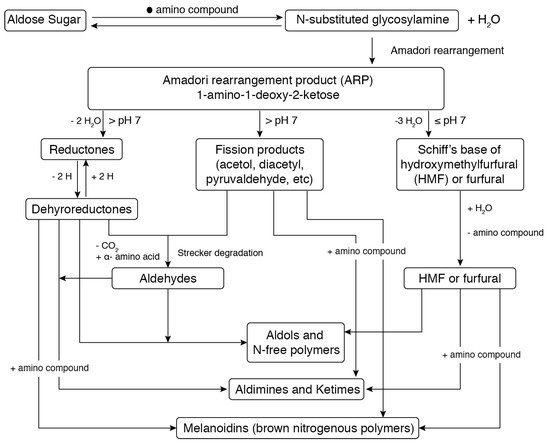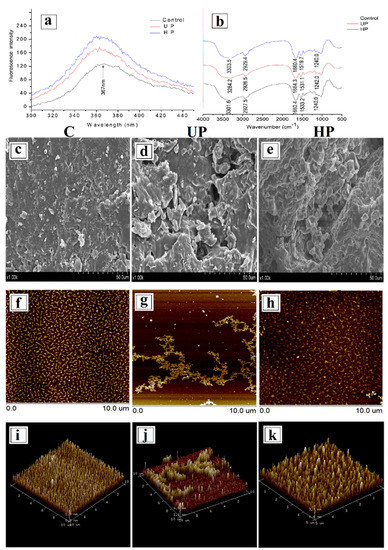1000/1000
Hot
Most Recent

Proteins represent one of the major food components that contribute to a wide range of biophysical functions and dictate the nutritional, sensorial, and shelf-life of food products. Different non-thermal processing technologies (e.g., irradiation, ultrasound, cold plasma, pulsed electric field, and high-pressure treatments) can affect the structure of proteins, and thus their solubility as well as their functional properties.

|
Treatment |
Substrate |
Condition |
Results |
Reference |
|---|---|---|---|---|
|
Ultrasound |
Corn gluten meal |
40 kHz, pulsed on- 10 s and off 3 s, 40 min and 20 °C. |
|
[27] |
|
Soy protein |
20 kHz, power 65 W, 0.5, 1, 5 & 15 min |
Protein extraction yield enhanced due to increasing in the solubility |
[28] |
|
|
Beef proteins |
2.39, 6.23, 11.32 and 20.96 Wcm−2, 30, 60, 90 and 120 min |
|
[26] |
|
|
Myofibrillar proteins |
200, 400, 600, 800 and 1000 W, 88, 117, 150, 173 and 193 Wcm−2 |
Increase in S0, decrease in particle size |
[29] |
|
|
Squid (Dosidicus gigas) mantle proteins |
20 kHz, 0, 20, and 40%), 0, 30, 60, and 90 s |
|
[30] |
|
|
Chicken myofibrillar protein |
240 w, 0, 3, 6, 9, 12 and 15 min) |
|
[31] |
|
|
Duck liver protein isolate |
24 kHz, 266 W by a pulsed on-time of 2 s and off-time of 3 s for 42 min |
|
[32] |
|
|
Β-Lg In Cow Milk |
9.5 W, 135 W/cm2 |
No significant alteration in allergenicity |
[33] |
|
|
Tropomyosin from shrimp |
30 Hz, 800 W for 30–180 min |
Allergenicity was reduced |
[34] |
|
|
High pressure processing |
Hongqu Rice wines |
200 and 550 MPa, 25 °C, 30 min |
Free amino acids content was decreased after 6 months storage |
[35] |
|
Brown rice |
0.1–500 MPa,10 min |
Free amino acids especially essential ones were increased |
[36] |
|
|
Tropomyosin from shrimp |
200, 400 and 600 MPa at 20 °C for 20 min |
|
[37] |
|
|
Soy allergen (Glycinin) |
100, 200 and 300 MPa for 15 min |
|
[38] |
|
|
Brussels sprouts |
200 and 800 MPa for 3 min, 5 °C |
|
[39] |
|
|
Cold plasma |
Whey protein isolate |
70 kV, 1, 5, 10, 15, 30, and 60 min |
|
[40] |
|
Grain rice flour |
- |
|
[41] |
|
|
Pulsed ultraviolet light |
Soy protein isolate (SPI) |
1, 2, 4 and 6 min Three pulses per second with a width of 300 μs |
Vanishing Gly m5 & Gly m6 bands after few minutes and decrease in allergenicity |
[42] |
|
Cold atmospheric pressure plasma |
1, 2.5, 5, 7.5 and 10 min without stirring |
Reduction in immunoreactivity of SPI |
||
|
Gamma-irradiation |
Target doses were 3, 5, 10, 25, 50, and 100 kGy |
Decrease in SPI allergenicity (Gly m5 & Gly m6) was dependent on the irradiation dose |
||
|
Pulsed electric field |
Grape juice |
4 µs width and with a field strength of 35 kV/cm, 1000 Hz and the total time 1 ms |
|
[43] |
|
Radiation |
Β-Lg in cow milk |
3, 5, and 10 kGy |
Protein aggregation and alteration of IgE binding epitopes |
[44] |
Gly: Glycinin, SPI: Soy protein isolate, kGy: Kilo gray
